In photography, there is some hidden attraction that leads us to interesting places in a photograph. We aren’t really sure what it is that makes us stick to that picture, but sure it stands out from others. Leading Lines in photography are mostly the “hidden” tactic that is used to guide the viewer’s eye and drive a story forward.
Although we can not always explain our joy over one picture directly, a lot of that sensation can be attributed to a perfect composition. The composition of a photograph, on the other hand, is based on a lot of different foundations. Leading lines are one of those and an important pillar in creating a pleasing composition.
Sometimes they do stick out as obvious features, like handrails of an escalator, but more often they are just naturally embedded in the image. Whether the photographer purposely chose those leading lines in his photos or just has been lead by his natural instincts, the composition can be learned and integrated with a little work. Over time, the eye will acknowledge leading lines instinctively and you won’t have to consciously think about it to get it right.
What might appear like some secret attraction formula is in reality just the combination of well-structured composition, which leading lines are a big part of in photography.
In the following, I present you opportunities to see leading lines in Street Photography and accustom your eye to see them naturally. At the beginning, it may be hard work and you have to actively look out and re-adjust your point of view. Not the most fun exercises, but efficient nonetheless. Over time and enough hours on the street, or analyzing the alignment in a photograph, you will instinctively know how to position yourself to get the leading lines correctly.
Even in Street Photography, where we don’t have much time and have to compose a picture in a matter of seconds, it is possible and should be the goal, to not neglect the composition. Street Photographers who say, that composition is just a bullshit subject that they don’t need to follow or pay no interest in, are just lazy and won’t develop their skills as a Photographer.
Pay attention to the details and soon those “hidden” symbols will speak to you very openly and you will be able to improve the look of your photographs tenfold.
The Origin of Leading Lines in Photography
Visual Composition didn’t start with photography but has its root in painting. While paintings allow the artist to create a scene on a blank canvas, the photographer and especially the documentary photographer has to work with what he is given.
Painters are able to build the picture based on the composition and integrate leading lines with natural features. A tree line in the landscape leading directly to the main subject or other perspective features that lead the eye directly.

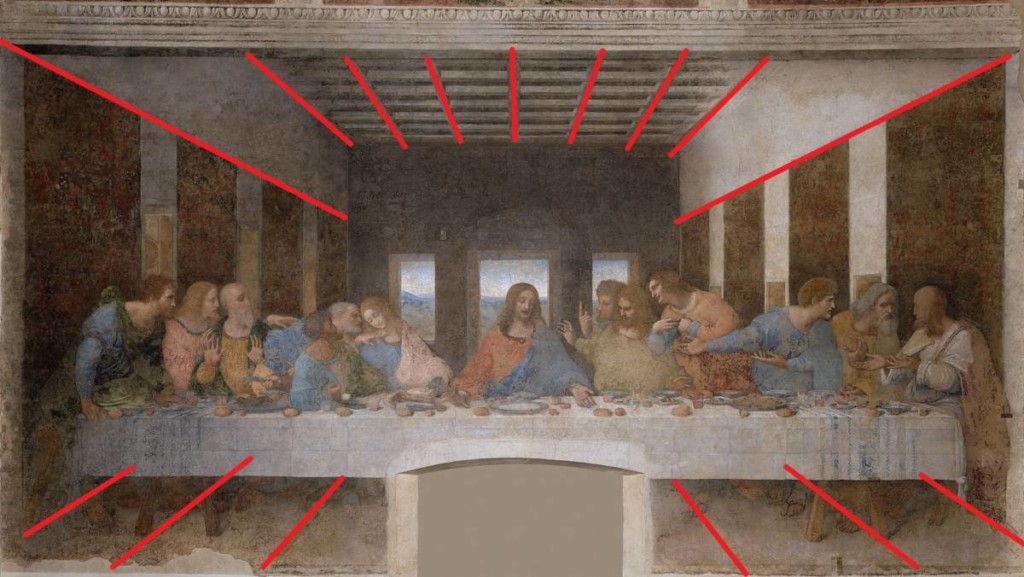
This is the classic “Last Supper” by Leonardo Da Vinci from 1498.
What is obvious from the first second is, that everything leads to the main character – Jesus in the center of the picture. Of course, the content has an influence in leading the focus to the middle like his guests pointing at him.
Yet, the whole composition and perspective are built around the focal point in the middle. It is very clear where the center of attention is and where the story begins.
As you can see, leading lines are also no artificial invention by modern photographers or art institutes. They are part of our natural feel for aesthetics.
Storytelling
Why are leading lines such an important part to create a pleasing visual composition? Why are they needed in a photograph and what is their purpose?
As already stated, they influence the movement of the viewer and the perception of an image. Going further, the background of leading lines is in creating a story that is understandable for the viewer.
In the art of storytelling, I describe the different pillars of a story. Like any story, it should have a beginning, a middle and an end. The tension should build up to climax and end with a resolution.
Leading lines give us a direct beginning in the image. On first glance, we notice what the main subject of the story is, without knowing what the story is about. Knowing the main character gives us the chance to explore the details in connection with him.
Instead of having a chaotic mess with people, objects and other details, where we have no idea of the relation between them, with a clear focal point, the photographer gives us big hints about how to progress from there.
Leading lines give a structure to the whole image.
How to integrate Leading Lines in Photography
Making the comparison to paintings or staged photography is not really feasible when it comes to Street Photography.
Street Photographers already have to put a lot of attention to catch the decisive moment itself, that details such as leading lines can be very hard to integrate correctly. Nonetheless, there are some “evergreen” techniques or subjects to illustrate leading lines in Street Photography.
Some of them are pretty overdone and nothing innovative, yet I’d advise you to take these shots too. They help you to understand how different perspectives work and how differently they influence the perception of an image.
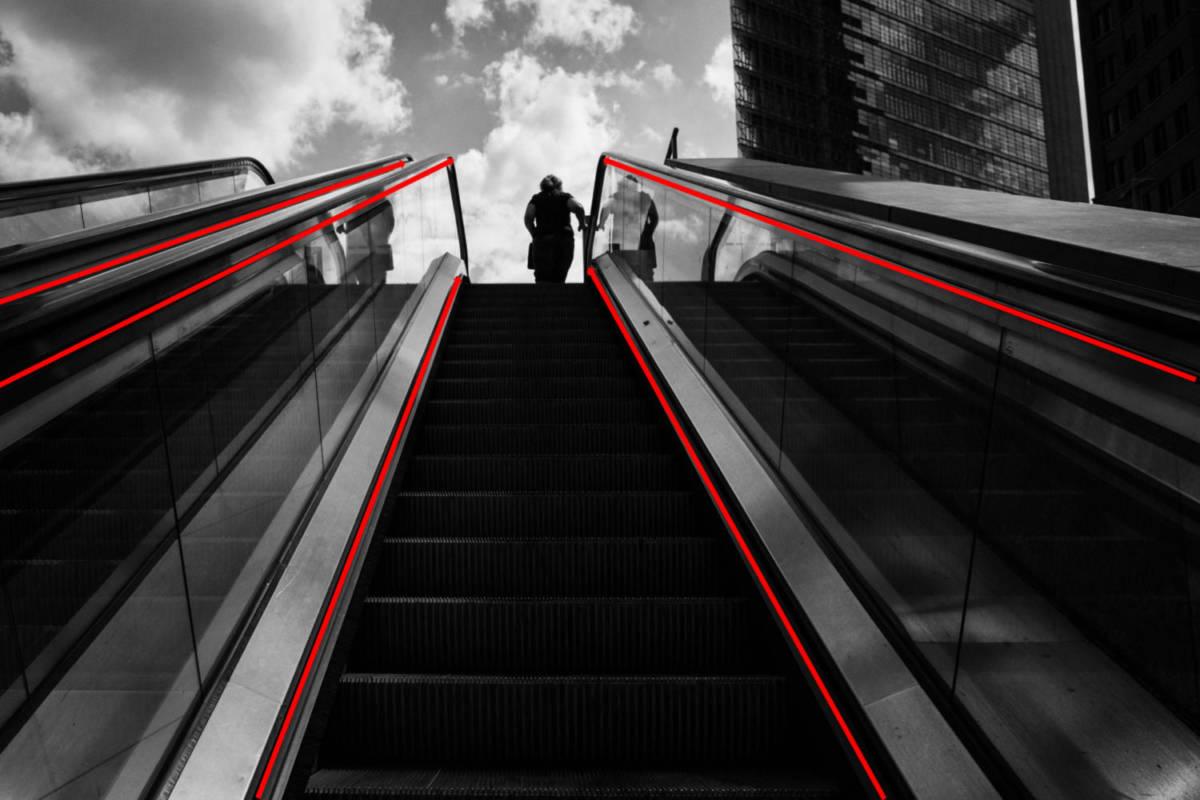
Leading Lines don’t need to be perfectly straight. They can also be curved and lead the eye in circular movements.

As a more unconventional way of directing the eye, you can also use symbols to guide the viewer.
Arrows, for example, are a universally understood sign that leads the eye like leading lines.
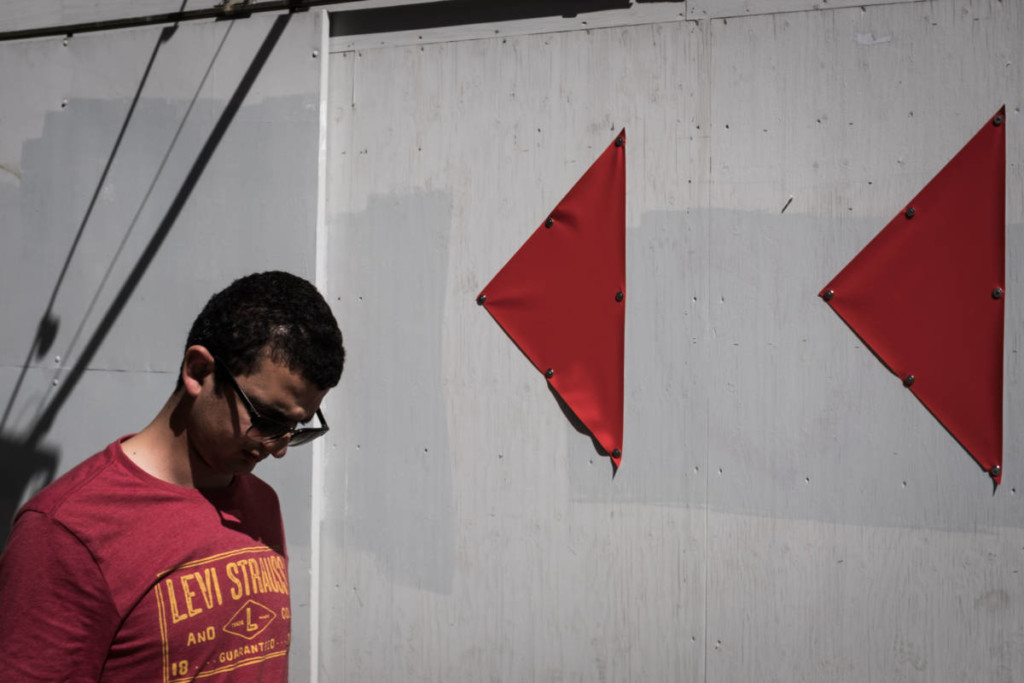
Examples of Leading Lines in iconic Photographs
As Street Photographers, we should also think outside the box. Leading lines can be found in various ways throughout photography.
Below are examples of photography “classics” and their leading lines.
Alfred Eisenstaedt
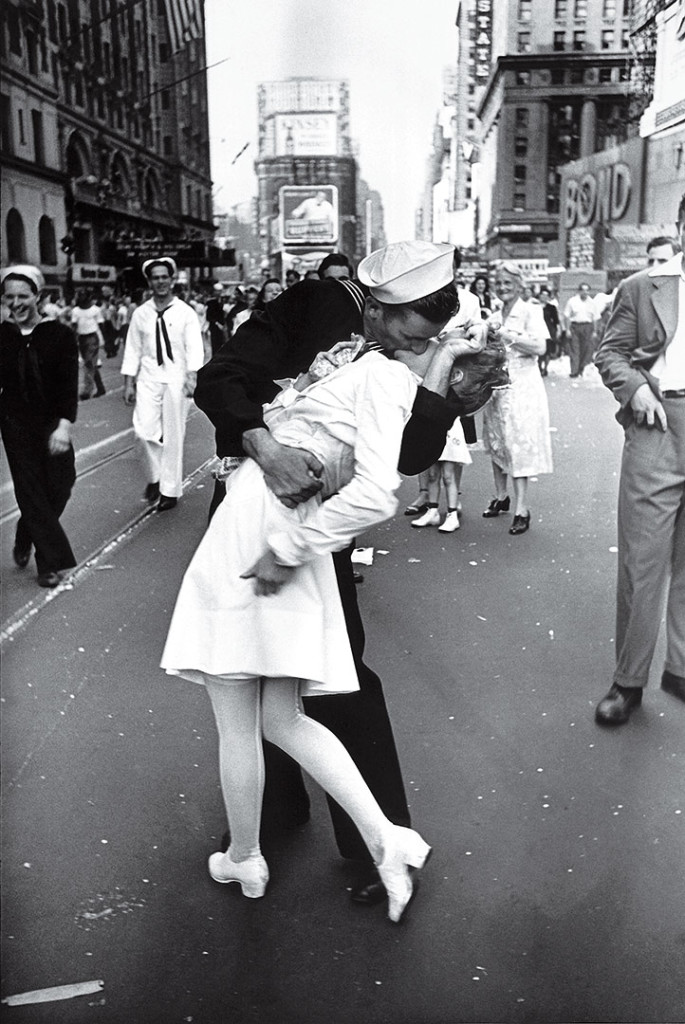

Henri-Cartier Bresson
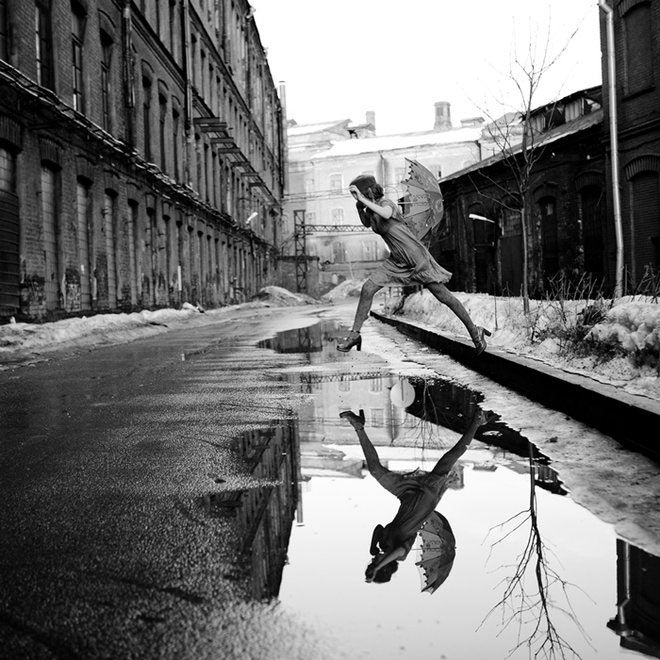

Eddie Adams

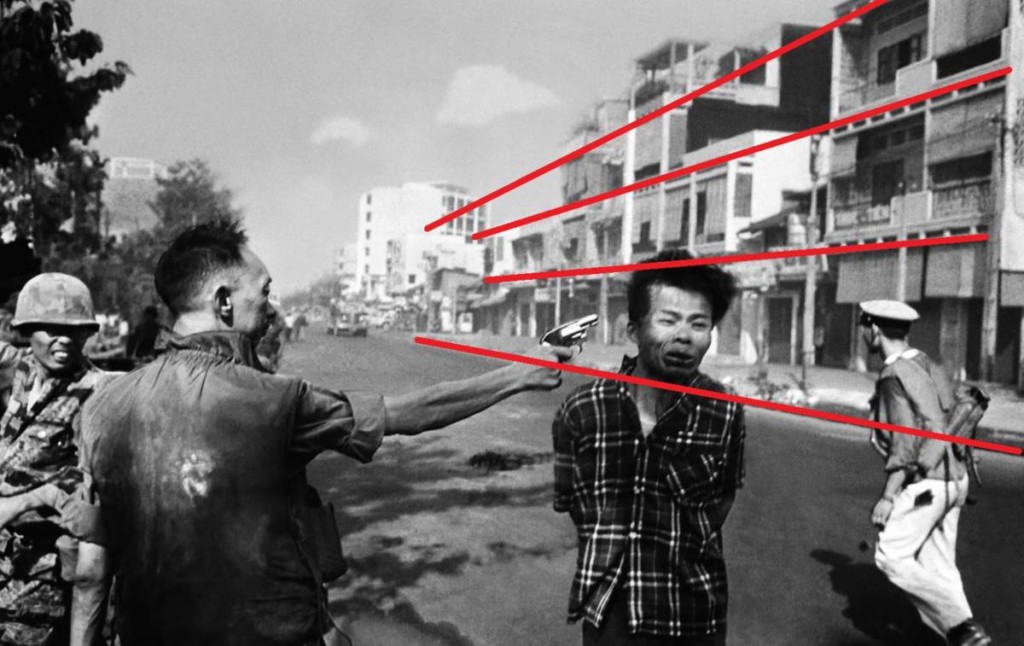
Sebastiao Salgado



































